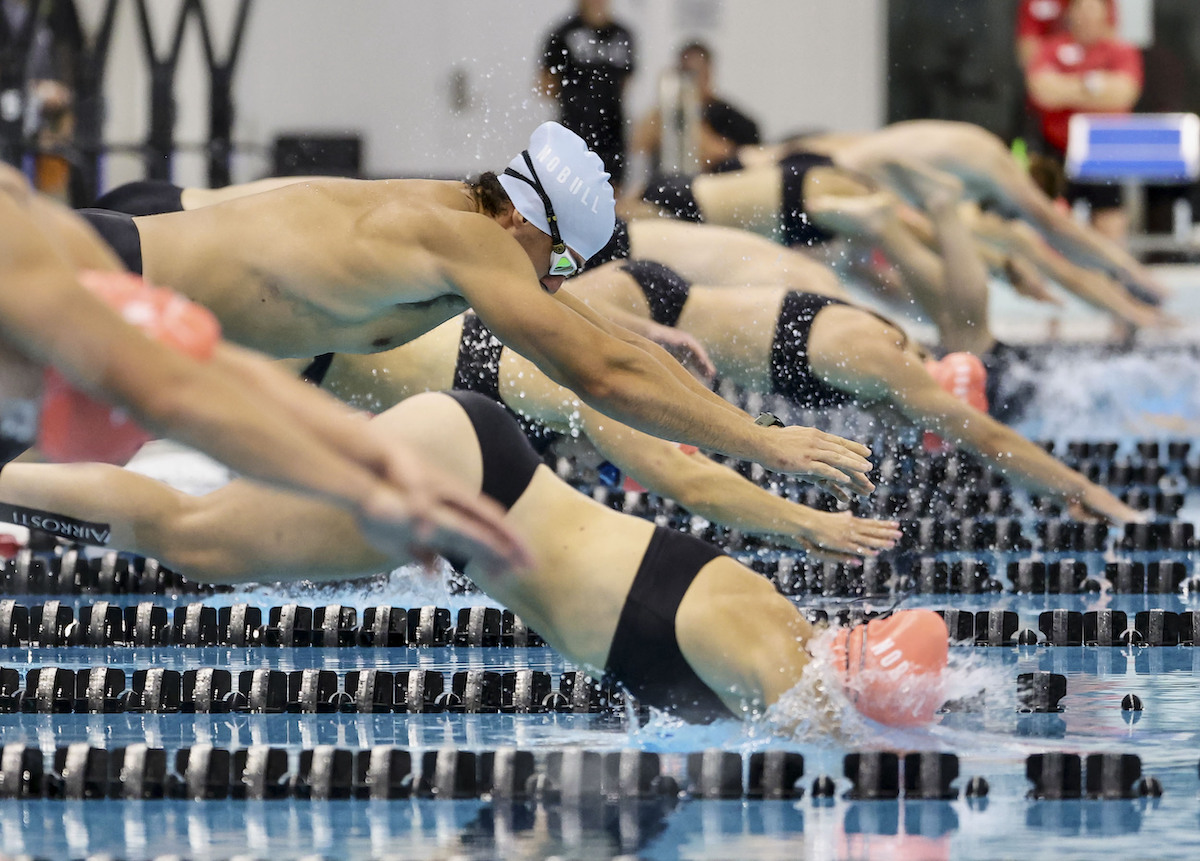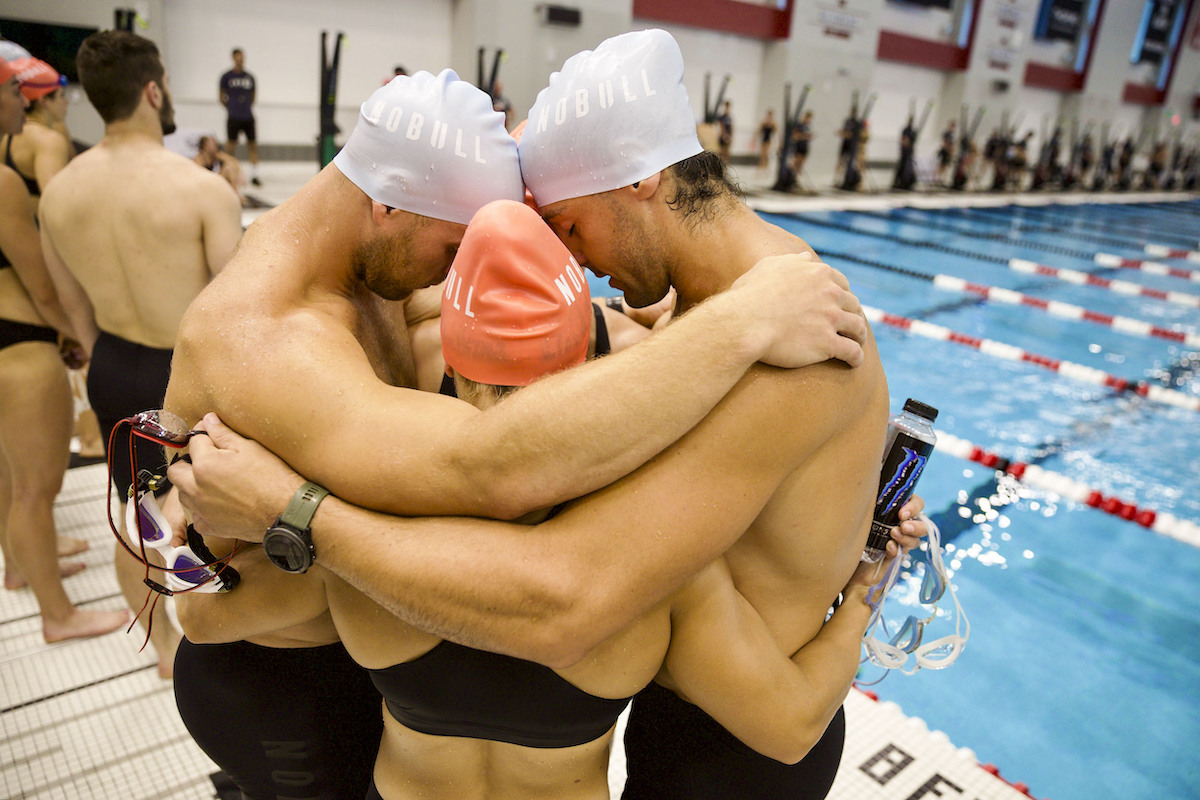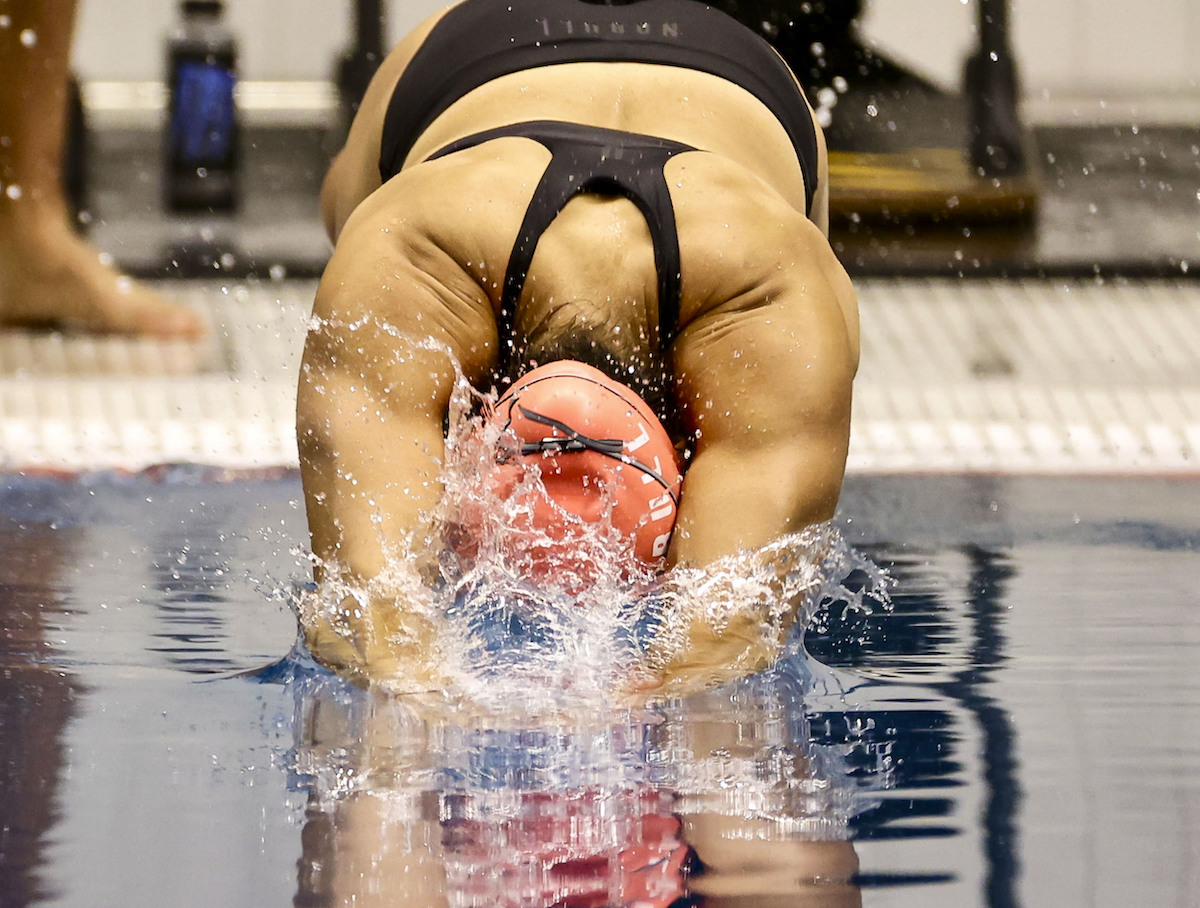This event will expose gaps in athletes’ training, preparation, skill, and strategy. It’s about having the right game plan. Play it right and be rewarded with valuable points. Play it wrong and lose valuable points while having to sit poolside watching others go by.
For teams and individuals, the goal is maximum calories.
The overall strategy for athletes to consider is to get to Rounds 7 & 8 as efficiently and effectively as possible.
As is often the case when you see a couplet that requires you to go all in, you know it is going to hurt — and it's meant to!
This couplet of 50-yard swims and Ski Erg calories will make relentless demands. It’s predominantly high volume, upper-body pulling with a significant and increasing cardiovascular demand. This is a test of strength, stamina, endurance and strategy.

Expectations for the Best Swimmers
How well an athlete can swim will determine if this is up to a 6-round, 12-minute workout with a maximum goal of 78 calories or a 16-minute workout for max calories.
Water is an unforgiving medium. Athletes who have learned that the secret to swimming well is to relax and focus on consistency and good technique even when fatigued will be rewarded. Those who struggle against the water will have a less productive application of force. They will tire faster, take longer to complete the swim, and have less time and energy to deliver on the increasing demands of the erg.
For those who are toward the dolphin end of the swim spectrum — like Tia-Clair Toomey and Jonne Koski — this is really a 4-minute die-for-points event after a 14-minute progressive warm-up.
While this is about max calories, this event starts with the 50-yard swim. Each round.

As a former competitive swimmer and now swim coach, I would point out a couple of saving graces on the swim to my athletes. First, unlike swimming in open water, there is a line on the bottom of the pool to keep an athlete on a straight path so they can enhance efficiency. Second, there is a turn at 25 yards that gives athletes a chance for renewed momentum. Every little bit helps, especially for the less proficient swimmers.
Looking at both exercises, each 50-yard swim should be completed in under one minute, leaving one minute-plus for the ski. However, with each round, the swim will get slower (likely one to two seconds slower per round) leaving less time to complete the increasing caloric requirement.
Based on Swim ‘N’ Stuff from the 2020 Games, the best 50-meter time was approximately 37 seconds. Knowing that and that 50 yards is only 45.72 meters with the advantage of a turn at 25 yards, let’s assume the time stamp for the first round is 33 seconds. And assuming a straight-line (unlikely) one-second decay in swim output per round for the best swimmer, the rounds for this year's top performers could look something like this:
Rd 1 - 50 yd + 8 cal
33 sec (swim) + 87 sec (ski)
Rd 2 - 50 yd + 10 cal
34 sec (swim) + 86 sec (ski)
Rd 3 - 50 yd + 12 cal
35 sec (swim) + 85 sec (ski)
Rd 4 - 50 yd + 14 cal
36 sec (swim) + 84 sec (ski)
Rd 5 - 50 yd + 16 cal
37 sec (swim) + 83 sec (ski)
Rd 6 - 50 yd + 18 cal
38 sec (swim) + 82 sec (ski)
Rd 7 - 50 yd + max cal
39 sec (swim) + 81 sec (ski)
Rd 8 - 50 yd + max cal
40 sec (swim) + 80 sec (ski)
*Please note the above does not account for equipment failure (goggles filling or coming off), the type of turn used (tumble turns are faster than the grab-and-go open turn), transition time for climbing out of the pool (more shoulders!), or traversing a slippery deck and skiing with wet feet (grip those toes).
In isolation, this shows the swim will be mostly anaerobic, and the ski, at least in the earlier rounds, will be mostly aerobic. However, as the rounds progress, the ski will become more anaerobic, therefore compounding the anaerobic effect.
The decay rate will very likely increase per round. For the better swimmers, this effect should be delayed; for the lesser swimmers, this will get ugly early.
The key is for an athlete to be able to walk the tightrope of anaerobic threshold — that point beyond which any extra effort leads to a sharp rise in the build-up of lactate and concurrent oxygen debt — to get to the final 2 rounds and then go full send with whatever’s left.

A Few Other Factors Worth Considering
Will more men reach the final two rounds than women?
Perhaps.
The men may have an advantage on the erg due to extra height and power with the likely ability to burn through the calories faster with fewer strokes.
The women likely have the advantage in the pool with better buoyancy due to a generally higher % body fat, leading to better horizontal alignment in the water with less drag and thus less effort per stroke.
An athlete’s chosen technique on the erg and in the pool can be an advantage.
The default swim stroke is front crawl.
But backstroke has its advantages: easy access to air to help stave off oxygen debt and an opportunity to loosen tight shoulders for the erg.
As this event is demanding on the upper body, athletes would do well to maximize their kick to aid with propulsion and body alignment (the more horizontal, the better).
For this event, the real race begins at Round 7 and then it’s about who is prepared to die the most for calories and points. This is truly survival of the fittest.
All photos by Charlotte Foerschler